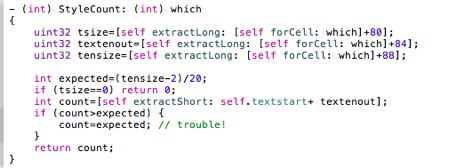So, for a while there during the campaign it seemed very iffy. But in the end, discipline and being on the right side of the issues prevailed. Yes, Elizabeth Warren won!
Oh, and that guy Obama too.
That was Paul Krugman at 2AM on the morning after the election, and he was right. She’ll be a fine senator. The campaign was a tremendous effort, and I was shaking in my boots right to the end. But back in July I wrapped up a house party that was descending into maudlin strategic wrangling with an impromptu claim that it looked really close at the moment but by election day we’d be ten points ahead. It was eight. In Malden, we went from an 1800 vote margin in the special election to a 6200 vote margin in this one.
But, man, was it hard to help these people.
Back in February, I started sending out offers of assistance. Need a web site? Need collaborative writing tools? Need something written? Need lunch? I was your guy. And I got a few friendly emails, but nobody gave me work.
I think that Tinderbox would be a terrific tool for field organizers. I offered copies — as many as you need. Training? You got it. Want it non-disclosed to be sure I’m not a snake-oil charlatan? Fine.
Not a nibble.
Starting in June, we had “leadership” meetings in a pizzeria to plan the campaign for our 50,000-person city. I was asked to design a four-sentence handout for the city’s July 4 celebration. We went through something like four drafts. At the last minute, one volunteer decided to replace all the copy with pabulum and threatened to quit and start a rival organization. Great.
I begged the campaign’s new media director for work of any sort. Crickets. In July, I launched a miniature campaign inside the campaign, calling in favors from colleagues and politically-connected former employees, just to get the new media director to respond to my email. She was encouraging in lots of directions, and never wrote back.
The logo you see above? I photoshopped it. I asked everyone, all the time, for the campaign graphic standards. What’s the font? What are the PMS colors? No one knew, or knew anyone who knew. That’s 100,000 impressions right there, and mine is a very niche blog. I tried to convince someone to do blogger outreach. I tried to convince someone to let me do blogger outreach, inside or outside the campaign. No answer.
I begged the North Shore Field Director for work. “Knock on doors, make phone calls.” But I’m lousy at canvassing, and I have a terrible time hearing the phone, and I’m rather good at a bunch of other things. I begged the 20-something who was running Volunteers for the summer.
“I’m too busy,” she told me.
“I can manage, I can organize, I can screen your emails.” I told her. “I can write training documents so you don’t have to spend 40 minutes with every new volunteer. Let me help you.” She told me to make phone calls.
This was a recurrent theme. Linda came in for phone bank training, went home, and wrote a manual for new phone bank people. I don’t think anyone got around to using it. Lots of people have special skills or talents – lawyers can litigate and negotiate, writers can write, programmers can code, chefs can cook, and people who happen to have a van or a pickup can haul stuff. We never found out who could help and how; the field organizers were being evaluated on doors knocked and phone calls made, and pumping those numbers for this week was what mattered.
In July, I asked that leadership meeting, “How many volunteers will we need on November 6?” We didn’t have an answer then, nobody seems to have thought about it until October, and then we found ourselves scrambling to get bodies to cover the bare necessities at the polls.
This was an extraordinarily well funded campaign, but until the end we never had sufficient collateral. We hoarded bumper stickers. Getting a lawn sign was a mark of great favor with headquarters. We printed our own brochures on or own ink jet printers.
And, in all this time, I never saw Elizabeth, never heard her stump speech. I never saw Mindy Myers, the campaign manager. I tried to get information on speeches for the Malden For Warren web site, and was told by the Volunteer Coordinator that they were secret, lest Republicans show up.
Some of this is a matter of local politics: the Malden Democrats still inhabit a world where the big social issue is getting the Irish and Italian immigrants into the mainstream of society. The big events have dinner at 5:30 and lots of walkers and guys singing Irish songs. The city has changed; we still have lots of new immigrants, but they’re from China and South Asia and Eastern Europe and Haiti, and we have lots of young folks too, but working the St. Patrick’s Day crowd is the way it’s always been done. (Someday soon, someone will push gently on the Malden Democratic City Committee and it will simply fall over.)
Some of the problem was management by metric. It was clear that the field organizers knew that they were always being evaluated, and so we were always knocking doors and placing phone calls. The main Web site collected volunteer emails for months, but nobody seems to have done anything with those names, or knew who might know about them, and nobody cared because getting more volunteers for the campaign wouldn’t improve their numbers for the week.
And some of it was just timidity. Whatever you can say about Elizabeth Warren, she’s not a timid woman, but her messaging was often very timid indeed. The constantly iterated claim that “She’ll work for you” was just about indistinguishable from her opponent’s slogan, “He’s for us.” The early campaign focused on “She’ll fix what’s broken in Washington,” which (a) is false in the event, as there’s nothing she can do about the tea party in the House, and (b) is in any case a Republican talking point. In a working class city in the grip of a nasty recession, we were instructed to pitch people on Warren as a “fighter for the middle class,” not reflecting on whether our audience saw themselves as part of the middle class.
It was a ton of work. It was painful. If I were starting over, I think I’d work entirely outside the campaign. Almost everything I got done, everything that worked, I simply did it and asked permission later. All the internal campaigning, the long memos and proposals and drafts and meetings, was almost entirely wasted.
And it was much, much too close.
Still, we won. And the country will be safer and better.





